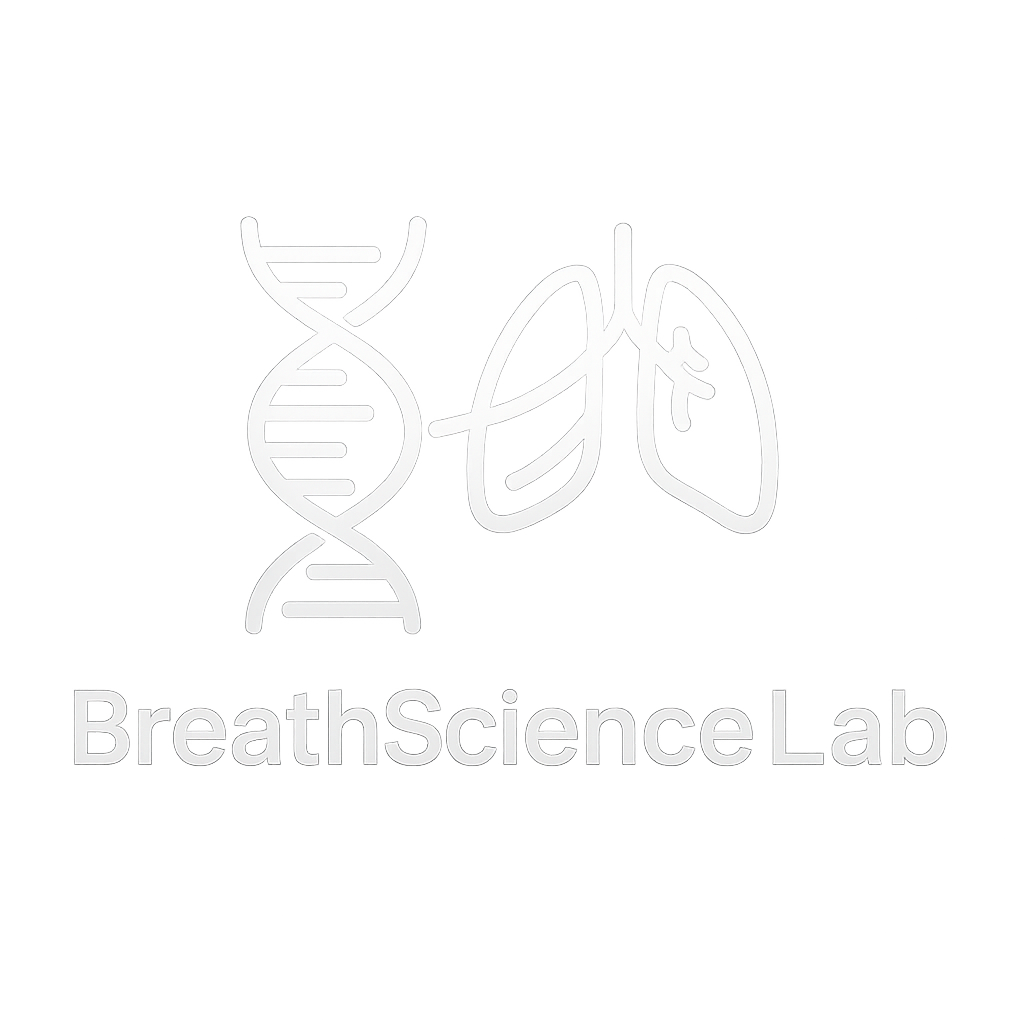Breathwork for Recovery: The Science Behind Parasympathetic Activation

In today's high-stress world, the ability to recover effectively from physical and mental strain has become increasingly crucial. While many focus on the active components of wellness—exercise, nutrition, productivity—the science of recovery remains largely underutilized, particularly the powerful connection between breathwork and parasympathetic nervous system activation.
The Recovery Crisis: Why Traditional Approaches Fall Short
Modern life creates a persistent challenge: our nervous systems remain in a constant state of activation. As noted in research, "A dysregulated nervous system results in shallow breathing. And shallow breathing in turn activates the sympathetic nervous system which keeps us stuck in fight/flight. Creating a feedback loop which isn't easy to break."
The consequences of this loop extend beyond momentary stress:
- Recovery metrics deteriorate, including heart rate variability (HRV) and sleep quality
- Physical performance plateaus despite increased training
- Persistent tension leads to altered movement patterns and potential injury
- Mental clarity and decision-making abilities become compromised
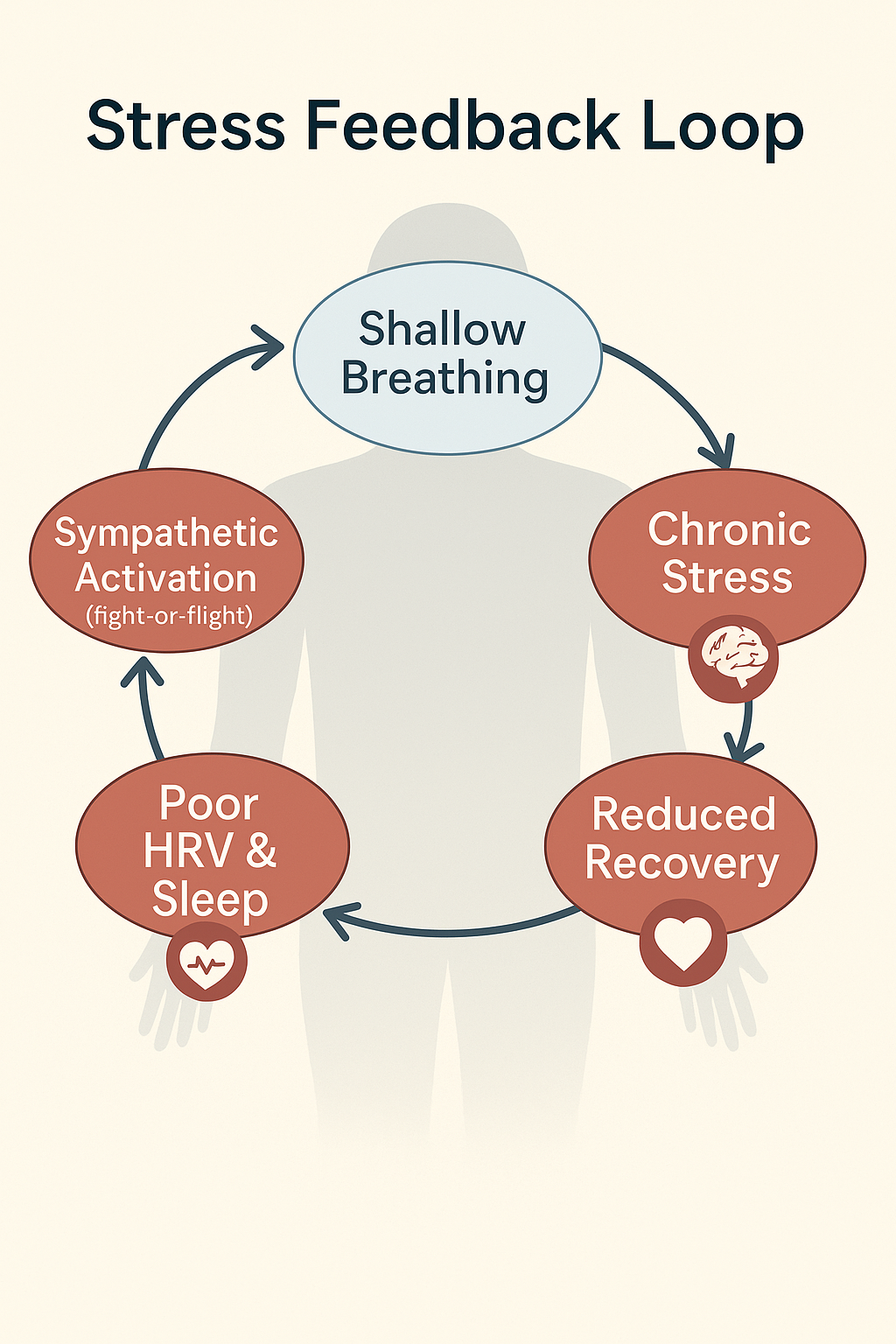
The Breathwork-Recovery Connection: More Than Just Relaxation
Recent research has illuminated the direct physiological pathway between specific breathing patterns and parasympathetic nervous system activation—our body's rest and recovery mode. This connection goes far beyond simple relaxation techniques.
The Science Behind the Connection:
When we engage in structured breathing practices that emphasize extended exhalations and diaphragmatic activation, we trigger several key physiological responses:
- Vagal Tone Enhancement: Prolonged exhalations stimulate the vagus nerve, directly activating parasympathetic functions.
- Cardiac Regulation: Heart rate variability improves as respiratory patterns normalize.
- Neurotransmitter Balance: GABA production increases while stress hormones like cortisol decrease.
- Biomechanical Reset: Proper diaphragmatic function helps restore optimal posture and tension patterns.
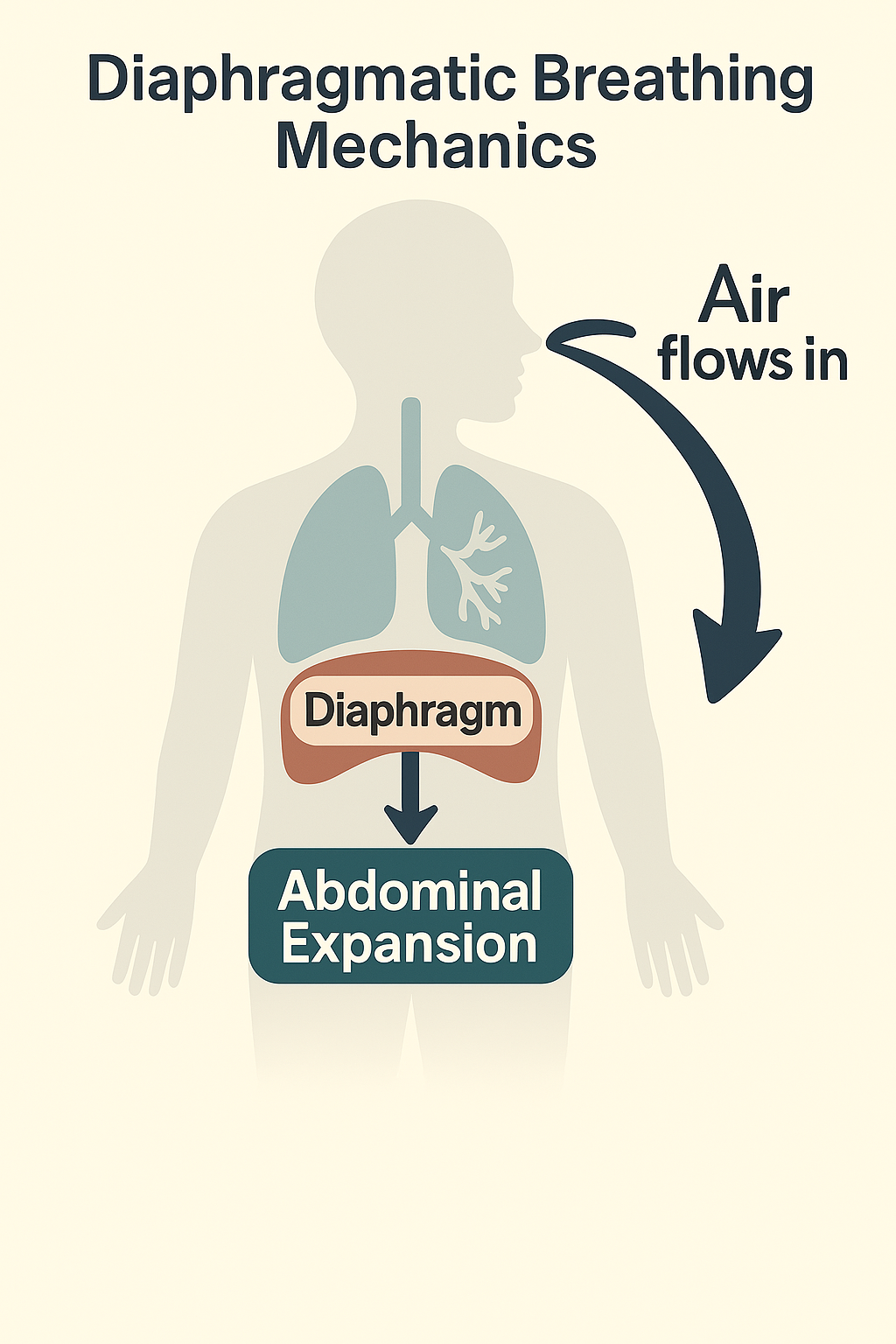
Quick Self-Assessment: Identify Your Breathing Pattern
Before diving into specific protocols, take this quick assessment to identify your current breathing patterns:
- Place one hand on your chest and one on your belly
- Take a normal breath (don't try to change anything)
- Which hand moved more?
- Primarily chest movement indicates shallow breathing and possible sympathetic dominance
- Primarily belly movement suggests healthier diaphragmatic breathing
- Breathe normally and count your breaths per minute
- Below 10: Possible slow breathing pattern
- 10-14: Normal range
- Above 14: Accelerated breathing pattern, possible chronic stress indicator
- After mild exertion (walking up stairs), how long does it take your breathing to return to normal?
- Less than 30 seconds: Good recovery capacity
- 30-90 seconds: Moderate recovery capacity
- More than 90 seconds: Compromised recovery capacity
Your answers will help determine which protocol level might benefit you most.
The Recovery Breathing Protocol: A Progressive Approach
Unlike generic breathing exercises, effective recovery breathing requires a systematic approach tailored to your current state of autonomic balance. Based on recent findings, we've developed a progressive protocol that addresses various recovery needs:
Level 1: Parasympathetic Activation Basics (For Beginners)
The 4-7-8 Recovery Breath (Perform for 3-5 minutes post-activity)
- Inhale quietly through nose for 4 counts
- Hold breath for 7 counts
- Exhale completely through mouth for 8 counts, making a whooshing sound
- Repeat 4-6 cycles
Why it works: This extended exhale pattern immediately signals safety to your nervous system, beginning the recovery cascade. The holding phase helps increase CO2 tolerance, improving overall breathing efficiency.
Level 2: Post-Workout Recovery Enhancement
Box Breathing with Extended Exhale (Perform within 10 minutes of workout completion)
- Inhale for 4 counts, filling from diaphragm first
- Hold for 4 counts
- Exhale slowly for 6 counts, completely emptying lungs
- Hold empty for 2 counts
- Repeat for 5-7 minutes
Integration tip: Use this protocol between high-intensity intervals to accelerate recovery and improve subsequent performance.
Level 3: Advanced Recovery Integration (For Experienced Practitioners)
Coherent Breathing with HRV Monitoring
- Establish baseline HRV using monitoring technology
- Breathe at approximately 5-6 breaths per minute (5-second inhale, 5-second exhale)
- Focus attention on heart region while cultivating positive emotional state
- Continue for 10-15 minutes, observing HRV improvements
Why this matters: Research demonstrates that this combined approach—specific breathing mechanics with intentional focus—creates significantly greater parasympathetic activation than either component alone.
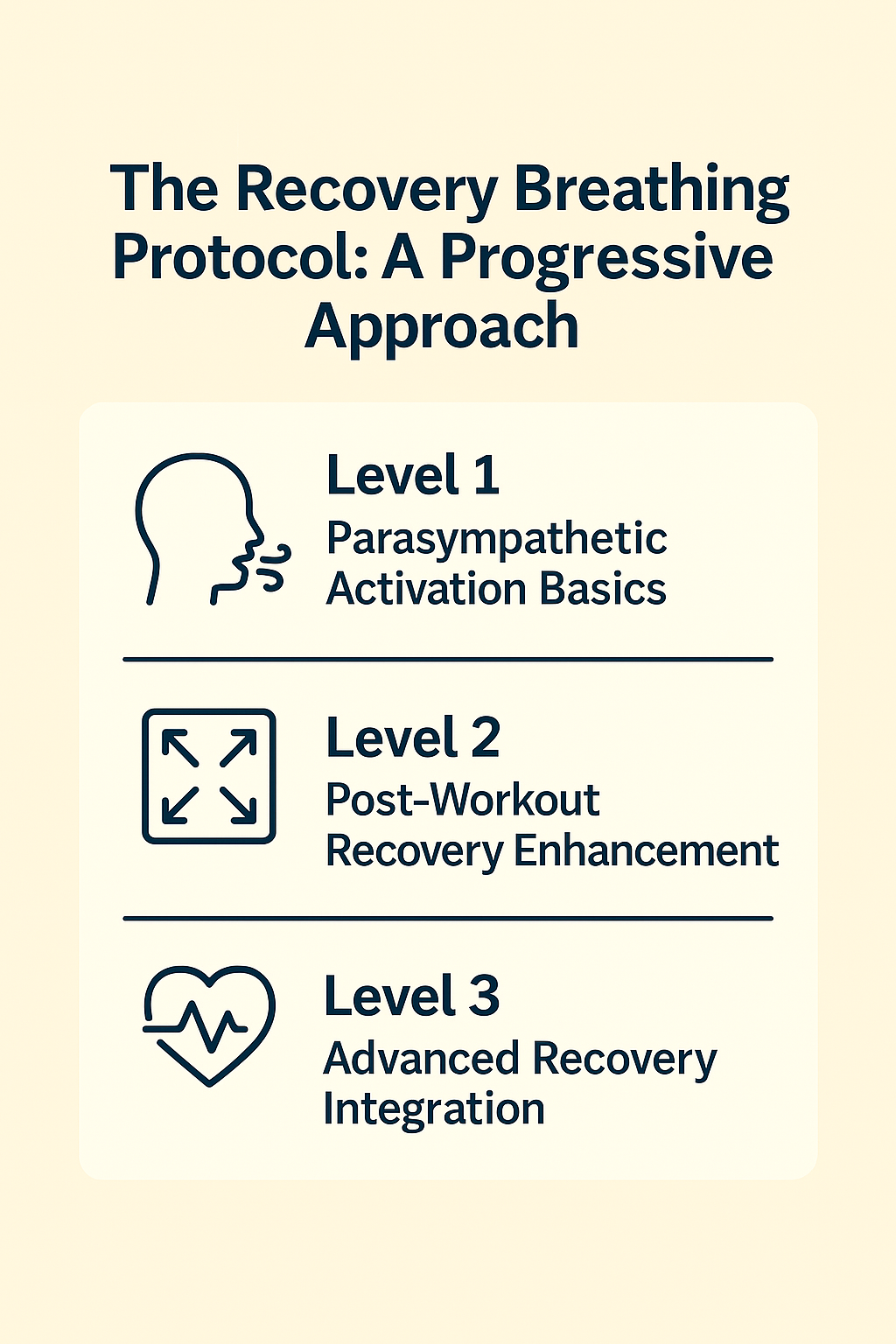
Common Challenges and Individualized Solutions
Unlike generic breathing advice, we recognize that breathwork responses are highly individualized. Research shows that common challenges include:
Challenge: Breathing Triggers Anxiety "Conscious breathing is amazing to reduce stress but for me it increases it! I'm still trying to figure it out myself."
Solution: Begin with shorter sessions (60-90 seconds) and emphasize the exhale without forcing the inhale. Progress gradually as comfort increases.
Challenge: Physical Discomfort During Practice "Decades of improper breathing caused knots and muscle imbalances ALL around my left side core. Made me realize why i always had trouble bracing my left side."
Solution: Start in supported positions (lying down with knees bent) before progressing to seated or standing. Address physical restrictions with appropriate bodywork.
Challenge: Difficulty Maintaining Consistent Practice "It feels like one of the most common suggestions that comes up in my healing is to do breathing exercises... but just...doesn't seem to work for me?"
Solution: Link breathwork to existing habits (post-workout, pre-sleep) rather than creating separate practice times. Use environmental triggers as reminders.
2-Minute Quick Start Recovery Protocol
For those who want immediate results, here's a simplified protocol you can try right now:
- Sit or lie comfortably with one hand on your chest and one on your belly
- Exhale completely through your mouth
- Close your mouth and inhale quietly through your nose for 4 seconds, feeling your belly expand
- Hold your breath for 2 seconds
- Exhale completely through your mouth for 6 seconds, making a slight whooshing sound
- Repeat 4 times (takes approximately 2 minutes)
Even this brief practice can shift your nervous system state. Notice how you feel before and after.
Implementing Your Personal Recovery Breathing Practice
The most effective recovery breathing practice is one you'll actually perform consistently. Here's a framework for building your personalized approach:
- Assessment: Evaluate your current recovery metrics (HRV, sleep quality, subjective stress levels) to establish a baseline.
- Selection: Choose the appropriate level protocol based on your experience and specific recovery needs.
- Integration: Identify 2-3 specific points in your daily routine where recovery breathing would be most beneficial:
- Immediately post-workout
- During work transitions
- Pre-sleep routine
- Upon waking
- Progression: After 14 days, reassess recovery metrics and adjust protocols as needed, potentially advancing to more sophisticated techniques.
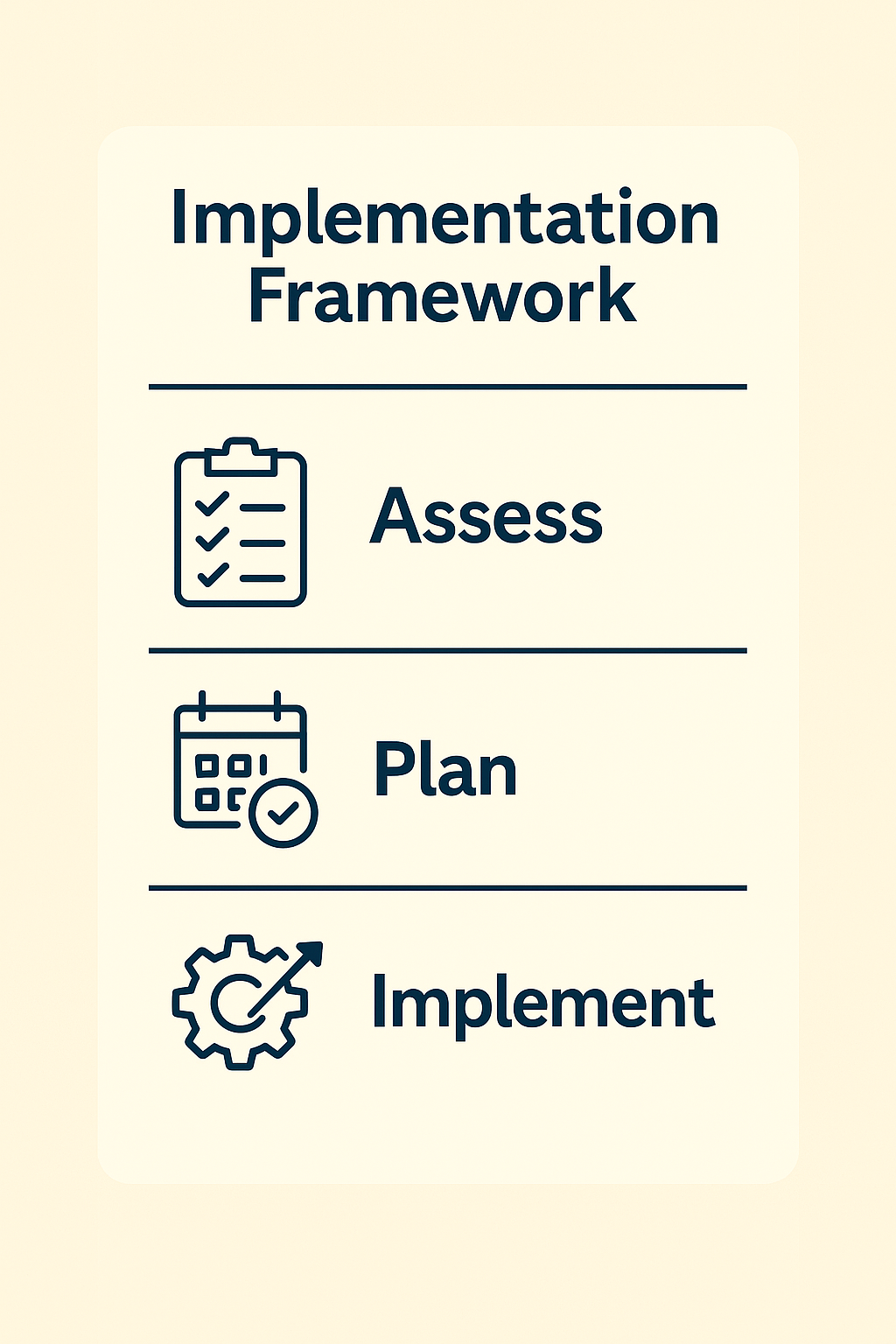
Technology Integration for Enhanced Results
Several technologies can help optimize your breathwork practice:
- HRV Monitoring Apps: Apps like HRV4Training, Elite HRV, and Oura provide objective feedback on your nervous system state.
- Guided Breathing Apps: Breathwrk and iBreathe offer customizable guided breathing sessions.
- Biofeedback Devices: Tools like Muse headband and emWave2 provide real-time feedback on breathing mechanics.
- Smart Watches: Many now include stress tracking and guided breathing features.
While technology isn't necessary, these tools can provide objective feedback and accountability.
Beyond Breathing: The Complete Recovery System
While breathwork forms the foundation of effective recovery, optimal results come from integrating multiple approaches:
- Contrast Exposure: Alternating hot and cold therapy enhances parasympathetic response when followed by recovery breathing.
- Movement Restoration: Specific mobility practices that complement breathing patterns help break chronic tension cycles.
- Sleep Optimization: Pre-sleep breathing protocols improve both sleep onset and quality.
Your Next Steps
- Baseline Assessment: Before beginning any practice, spend 3 days tracking your current recovery metrics (free HRV apps can help).
- Protocol Selection: Choose the appropriate level protocol based on your experience and implement daily for 14 days.
- Progressive Integration: Gradually incorporate breathwork into multiple points in your daily routine.
Ready to experience what proper recovery truly feels like? Download our free Recovery Breathing Quick-Start Guide, which includes detailed protocol descriptions, common troubleshooting solutions, and a 14-day implementation calendar.
Frequently Asked Questions
Q: How quickly can I expect to notice benefits from recovery breathing?
A: Most people report subjective improvements (feeling calmer, improved sleep quality) within 3-5 days of consistent practice. Measurable improvements in HRV typically emerge within 10-14 days of regular practice.
Q: I feel lightheaded when doing these exercises. Is that normal?
A: Lightheadedness may indicate you're breathing too deeply or quickly. Focus on keeping your breaths smooth and comfortable, not forced. If lightheadedness persists, reduce the duration or intensity of your practice.
Q: How does recovery breathing differ from meditation?
A: While meditation often incorporates breathing awareness, recovery breathing specifically targets physiological shifts in the autonomic nervous system through precise breathing mechanics. Meditation typically focuses more on mental awareness and attention training.
Q: Can I practice recovery breathing if I have asthma or other respiratory conditions?
A: Most people with respiratory conditions can benefit from breathing practices, but should start with shorter sessions and gentler techniques. Consult with a healthcare provider before beginning, particularly if you have severe respiratory limitations.
Q: How can I remember to practice consistently?
A: Link your practice to existing habits (after brushing teeth, before meals, etc.) and use visual reminders in your environment. Many find that scheduling specific practice times or using reminders on their phone helps establish consistency.
Join Our Recovery Breathing Community
Connect with others on their recovery breathing journey in our private online community. Share experiences, ask questions, and get support from both practitioners and coaches specializing in breathwork for recovery.
This article represents the intersection of cutting-edge research and practical application in the field of recovery science. For personalized guidance, consider scheduling a recovery assessment consultation with our specialized team.
References
https://www.ncbi.nlm.nih.gov/pmc/articles/PMC9828383 https://www.semanticscholar.org/paper/abba6c30600a478f7b54f341eddccda857398e8b https://www.ncbi.nlm.nih.gov/pmc/articles/PMC11763547 https://www.semanticscholar.org/paper/ce8ee0f180ee44c47f02f1ebdd38a4e9872da534 https://www.ncbi.nlm.nih.gov/pmc/articles/PMC10719279 https://pubmed.ncbi.nlm.nih.gov/38859613 https://www.semanticscholar.org/paper/5de5f655080dbdf263e0ee5ce2b01ec15eeeaaf0 https://www.semanticscholar.org/paper/7a6e756c1848eae566ae4e0e08a6bc5b2eab2470
